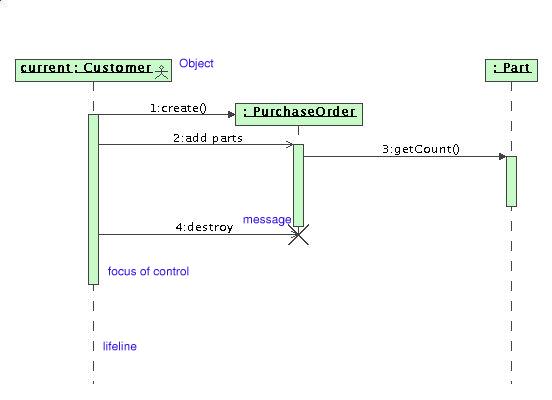Each object in a sequence diagram has an object lifeline -- a vertical dashed line representing the existance of an object over time. Most objects that appear in a sequence diagram will be in existance for the duration of the interaction. These objects are all aligned at the top of the diagram with lifelines appearing from top to bottom. Objects may be created during the interaction. Their lifelines start with the receipt of a message stereotyped as create. Objects can also be destroyed during an interaction. Their lifelines end with the reciept of a message stereotyped as destroy .
Each object also has a "focus of control". The focus of control is a tall thin rectangle placed along the lifeline. The focus of control shows the period of time in which the object is performing an action, either directly or through collaboration with another object.
Figure 1 - Sequence Objects example - creation and distruction of a PO.

In the Figure 1 example, the an Object, message, focus of control and lifeline have all been identified and labeled. Here we see the "current" instance of a Customer object creating a PurchaseOrder, adding parts to it and destroying it.